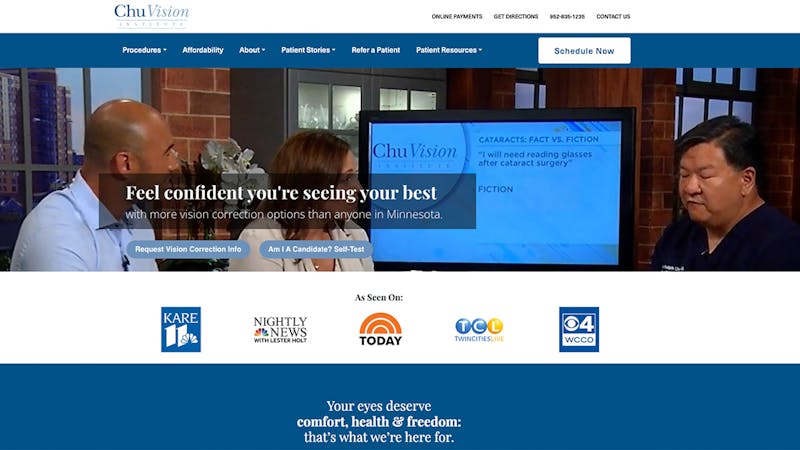
Cataracts, a common and preventable condition in the United States, is the leading cause of blindness in countries like Myanmar.
There are many problems with the eye care situation in Myanmar, stemming from the lack of ophthalmologists in the country to the lack of the technology that is available to ophthalmologists in the United States.
Dr. Ralph Chu, a Bloomington-based ophthalmologist and Edina resident, is hoping to change the eye care situation in Myanmar for the better.
“Cataracts is the leading cause of blindness over there,” Chu said. “The rate of developing cataracts was out-pacing the ability of surgeons to treat it. Even with all this technology and all this advanced health care, we are not keeping up with the pace of cataract blindness around the world.”
Chu was recruited by the Hawaiian Eye Association in August to join a group of ophthalmologists that was heading to Myanmar to help develop the country’s eye care system.
“We were there to give lectures to the local ophthalmologists to share our knowledge, asked to demonstrate live surgery techniques, consulted with patients and did post-operative care,” Chu said. “It was a really comprehensive week.”
Chu believes that his trip to Myanmar was one of the best experiences he has had in his career.
“It was the most fulfilling thing that I’ve done professionally,” Chu said. “Helping people in the United States with a successful practice is very fulfilling, but being able to share that and attack these global issues is something that I find unique to our profession. To feel and see the appreciation from these people who haven’t been able to see for a long time and can suddenly see better and can benefit from your hands touching them is incredible. To see that will live on because you’ve trained another 200 ophthalmologists and shared knowledge is even more fulfilling.”
A different experience
Due to the technology gap between the U.S. and Myanmar, Chu was often given different equipment for surgery than he was used to.
Chu, upon arriving at the clinic, was given a flashlight when he asked for equipment that he could use to examine a patient.
“You learn to operate with different equipment,” Chu said. “You have to have the right mindset to do this as a surgeon. It wasn’t as hard to adapt as I thought it was going to be.”
Chu said that the ophthalmologists had just enough resources to complete the surgeries.
Other items that are commonplace here in the U.S. were either not available or they had to be ordered in from another country.
“The basic things that we take for granted here in medical care for the eye, like hard contact lenses, were not available,” Chu said. “It was a little shocking and disheartening.”
Chu was also exposed to a different style of clothing in the operation room, as Myanmar’s ophthalmologists often wore traditional clothing and flip-flops as they operated on patients.
What’s next?
Myanmar, according to Chu, currently has only 300 to 350 ophthalmologists in a country that has more than 60 million residents, which is a reason why many patients find it difficult to be treated.
Myanmar has also lacked the technology to help its patients, as the country acquired LASIK technology only last year. The country has had many technological setbacks that have resulted in many preventable sight issues.
“To be able to see people that could be helped with something as simple as a contact lens and not a surgery was hard,” Chu said.
Chu is confident that the ophthalmologists in Myanmar will improve, as every surgeon he worked with was thrilled to learn from a successful cataract surgeon.
“They’re just hungry for knowledge,” Chu said. “The doctors are dedicated, and they believe in what they do.”
Chu believes that the number of ophthalmologists in Myanmar will continue to rise as time goes on, as the country had only 45 ophthalmologists in 1992, and that number has gone up every year.
Chu is also excited to see where the country is as time goes on and is very interested in making a similar trip to a country that seeks ophthalmology knowledge.
“This is something that we’re definitely committed to,” Chu said. “The commitment is there to help contribute to solving this problem of cataract blindness and helping those in need throughout the rest of the world.”
Contact Chris Chesky at [email protected]. Follow him on Twitter at @MNSunSports.
